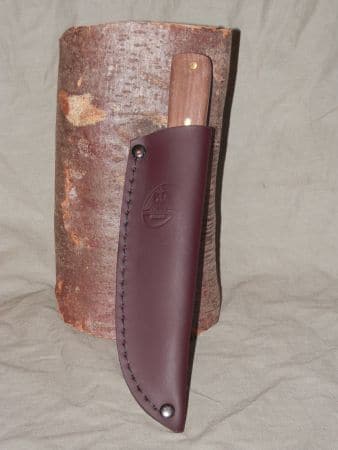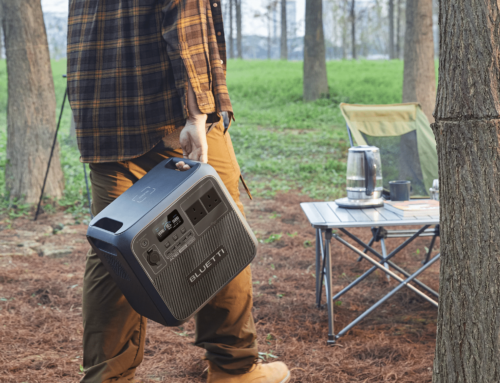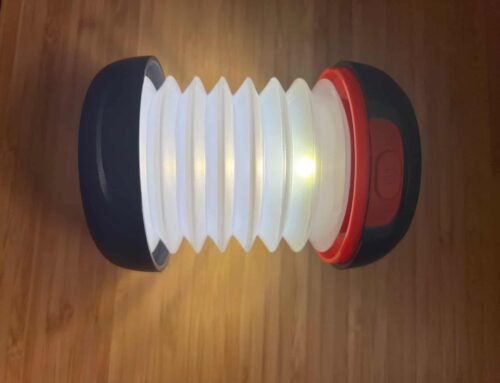
Review
By John Fenna
Horace Kephart was a famous travel writer in the later 1800s and early 1900s and is best remembered by bushcrafters for his books “Camping and Woodcraft” (which is still available in a facsimile edition) and for various pieces of gear that he designed or inspired with his practical writings.

One piece of kit Kephart designed was a simple, functional and affordable fixed blade belt knife which he had made by Colclesser Brothers of Eldorado, Blair County, Pennsylvania, at a RRP of $1.75 for the 4” blade version and $2.00 for the 5” version.
This knife design, as with Nessmuk’s knife design, has inspired many others to make their own “take” on a “Kephart Knife”. Recently I have had the chance to try out the “Condor Knives” version of the Kephart Knife design and have been pleasantly surprised at how much knife you get for your money.
“Condor Tool and Knife” traces its history back to Solingen, Germany, in 1787 but are now based in Santa Ana, El Salvador, where they make a huge range of knives, machetes, shovels and other hand tools.
The Condor Knives’ “Kephart Knife” seems to follow the original 4” bladed version design quite faithfully and has proved to be a good “bushcraft” tool during my trials.
The knife is made from 3mm thick 1075 high carbon spring steel with a flat ground 1” wide, 4.25” long blade featuring a good edge bevel, a fairly short and “rounded” spear point and a 4mm ricasso. The “Condor” name is stamped into one side of the blade and “El Salvador” on the other.
The full tang handle has “South American Hardwood” scales (I was unable to get a better identification of the wood) with 3 brass pins. The slim 4.5” handle incorporates a finger guard and has a swell towards the butt, and I found it very comfortable for all day use, but I prefer a slim handle and others may find it a little too slim for their preference.
Overall, the knife measures 8.75” long and weighs about 3.5 oz (100g), quite light for a knife of this size.
The “fit and finish” of the knife is of a pretty good standard with the wood of the scales being flush to the tang, if not 100% equal in thickness or profile. This was not enough to make the attractive handle uncomfortable and was only noticeable on close inspection. The brass pins have visible sanding scratches but are flush to the wood and I am sure that if the handle finish bothers you, you can quickly bring it up to “standard” with a little wet and dry paper. The wood scales oil up beautifully, the handle was comfortable without any work to it and was secure in the hand in all the different grips I used during testing and oiled up to look great as well.
The blade came a little less than “shaving sharp”, but only needed a quick strop to bring it up to my desired sharpness and the steel not only takes a hair-popping edge, but holds it well too.
The sides of the blade are not polished, but covered with a black coating to help prevent rust and corrosion. You can see some grind marks through the coating and the plunge lines of the grind are not 100% even, but these points would not quickly be noticed on casual inspection. The coating is durable and tough with no wear or thinning noticeable so far, despite my having used the knife quite extensively.

During testing I have used the Condor Kephart Knife to carve, whittle, featherstick, baton and cross batton a variety of woods, cut hide and leather, cut skin from flesh, slice meat and veg, harvest nettles and brambles for cord making etc, and found it well up to hard work. The light weight and slim blade make it not as good as some for slashing, chopping and splitting wood, but make it light to carry, and better than many for finer work.

The spine of the blade is excellent for use with a spark stick or fire steel and will even get a few sparks when used with flint.
As an “all rounder” for general “bushcraft” type usage, this pretty faithful version of the Kephart designed knife is in my opinion thoroughly practical, if not over “flashy” in looks. It is simply a good tool with a good finish which handles well and gets the job done.


The Condor Kephart Knife comes with a simple but strong 3mm thick leather sheath with a sewn and riveted welted edge and a sewn-on belt loop that will easily take belts up to 2.5” wide. The Condor logo is stamped into the front of the sheath and, when in the sheath, the Condor Kephart weighs 6oz.
The original Kephart Knife seems to have come with a “pancake” style sheath with a belt or button suspension behind the knife’s handle, so the Condor version is not faithful to the first Kephart design here.
I find the Condor sheath carries too high for my taste and is a little awkward to use if the knife is worn on a trouser belt.
The Condor Kephart Knife has proved to be a great choice for a simple, functional and affordable knife for camping and woodcraft use – just at Horace Kephart intended with his original design – and retails for around £42.95 from Heinnie Haynes who supplied the review sample.
You get a lot of knife that seems very good value for money if you are looking for a practical bushcraft blade with classic design and traditional materials.
For more information contact Heinnie Haynes
www.heinnie.com
Tel 033 0300 0400
Heinnie Haynes seem to have what is the largest range of knives and outdoor kit of any one retailer that I have ever come across, and if you visit their showroom you will be amazed at what they have to offer!






Leave A Comment
You must be logged in to post a comment.